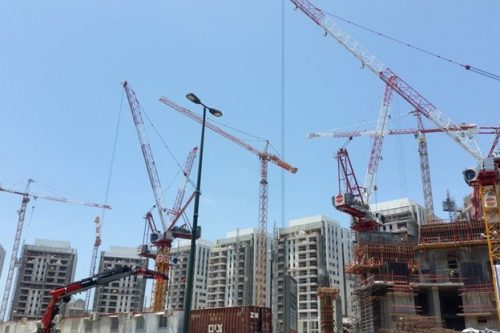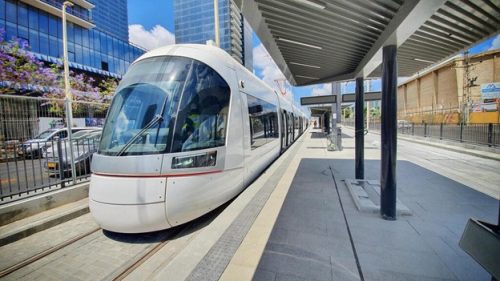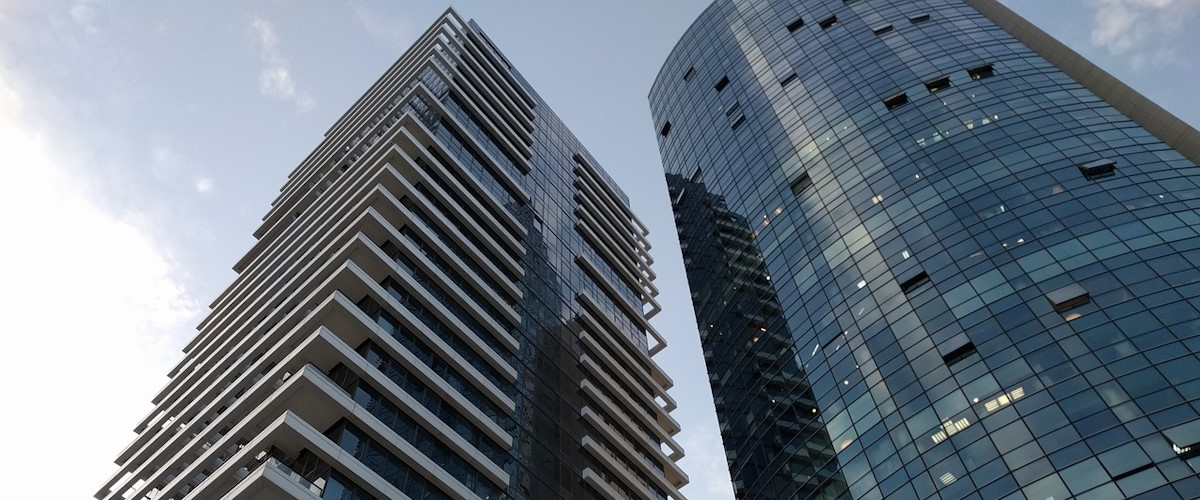
10 Reasons for Making Aliyah
January 16, 2024
Tel Aviv Has Initiated the Construction of Israel’s Tallest Tower.
February 11, 2024A shortage of housing, an excessive number of regulations, inefficient transportation systems, and a belief that prices will never come down—on top of all these, the devastating events of October 7th and their repercussions contribute to the high cost of homes in Israel.
Why is the cost of homes in Israel so high? Anyone who takes a look at the Israeli real estate market will quickly learn that homes in Israel are extremely expensive. The average price of a 3-bedroom apartment in Israel is approximately $550,000. In the center of the country, in cities adjacent to Tel Aviv, such as Ramat Gan or Herzliya, the average price is around $950,000, and in Tel Aviv, the average exceeds $1,300,000.
Circumstances that occurred in 2008 when interest rates started to drop to almost zero resulted in a constant increase in prices since then. I bought my first 2-bedroom apartment in Tel Aviv at the end of 2006 for $274,000, while today the same apartment is worth four times more. Despite government efforts to halt this increase and bring prices under control, the wave has continued with varying intensity for the following reasons:
The Supply: Shortage of 100,000 Apartments
The main reason is a shortage of housing available. Each year, around 50,000-55,000 new households join the market, while the number of new apartments built does not meet the demand. It is important to note that the responsibility for the supply of new homes rests first and foremost with the government, via two branches that it wholly controls. The first is the Israel Land Authority (ILA), which is in charge of all the state-owned land, accounting for 93% of land in Israel, while only 7% of land is privately owned. The second branch is the urban planning section, which approves all building plans and has the power to determine the number and location of apartments that may be built.
From 2005 until 2010, during which time the price rises first began, the number of housing starts each year was between 30,000 and 35,000. During those years, the government approved zoning for too little land for the construction of residential apartments, and where land was approved, the planning system worked very slowly in processing and granting building permits.
In the year following 2010, when the government eventually realized that the housing crisis was looming, large tracts of land were approved for residential construction, and regulations were eased to accelerate the construction process. Housing starts increased in the following years to 43,000 and 48,000 apartments annually and reached 67,000 in 2022. However, there is still a deficit of around 100,000 apartments, and this shortfall continues to plague the Israeli housing market to this day. To successfully cover the deficit from previous years, the government’s target is to maintain a pace of 60,000 apartments annually by 2025 and 66,000 by 2030. In 2023, the annual target was missed by 13% and is expected to finish with 52,000 starts, as part of the high-interest rate and October 7th repercussions, signifying that the deficit will increase even more, now that there is also a manpower shortage.

One Metropolis: Where Everyone Wants to Live
Another reason for the high price of homes in Israel lies in the unique structure of the country, built around Tel Aviv, a single metropolis where most of the economic activity is concentrated. The majority of the Israeli public prefers to live in Tel Aviv or one of the nearby cities for a good reason: the big city offers more employment opportunities, a high level of service, a rich cultural life, etc. These benefits are clearly expressed in apartment prices, which get lower and lower the farther away one goes from the center.
In Israel’s crowded central region, however, the government’s land reserves are running out, unlike the vast land reserves in the Northern Galilee and the Southern Negev regions. The problem is that relatively few people are interested in living in those areas, resulting in the reluctance of building developers to undertake projects there for fear that the apartments will not sell. A fundamental change in that situation could occur if the government would invest in the periphery and encourage the establishment of competing cities that would also turn into centers of business and culture. Despite the many statements on this issue by various governments, such reality has yet to materialize. As of today, 135,000 people have been evacuated from their homes in the south and north of Israel due to border proximity and life-risking threats, staying in hotels and apartments around the country. After more than 100 days, there is a strong belief that many of them will move to the center of the country, creating more demand.

Transportation: Inadequate Mass-Transit Systems
The upgrading of the transportation infrastructure could also improve the situation. If Israel had high-speed trains that could bring people from the south and the north to Tel Aviv in less than an hour, cities with large land reserves for residential construction would become viable housing alternatives for people interested in continuing to work in the Tel Aviv area. Israel’s transportation infrastructure, however, still favors private cars, and the existing mass transit systems are outdated and inefficient. The first mass transit line in the Dan region (Tel Aviv and the cities surrounding it) is currently being built, and after many delays in its construction, the completion date was mid-2023, and the rest of the lines will only be completed in 2030.

Local Authorities: Negative Incentive to Increase Supply
Another barrier that constitutes a real obstacle to increasing the supply of homes in the country is the local government, or rather the method of financing the local government used in Israel. Most local authorities are hostile toward new construction. Many think that the reason for this is the fear of overloading infrastructure, the reluctance of residents to live near construction sites, and other understandable reasons for opposition to residential construction. While all this is true, it is still not the main reason for the local authorities’ resistance to increasing residential development in their territories. The reason is much simpler and has to do with ARNONA, the municipal tax paid by each holder of real estate in the area of the authority. While the property tax for residential properties is quite low, the taxes for offices, commerce, industry, etc., are around five times higher. Added to this is the fact that it is precisely the consumers of residential areas, who, as stated, pay low property taxes, are the main consumers who demand education, cleaning, sanitation, gardening, welfare, culture, religious services, etc., whereas commercial real estate owners require only cleaning, more or less. In fact, under the current financial method, the addition of residential users only increases the authority expenditure and adds to their deficit, and this is the reason for the lack of motivation of the local authorities to build more apartments in their areas.
Expectations: No One Believes that the Price of Homes in Israel Will Go Down
Finally, the Israeli real estate market, just like everywhere else, is a market of expectations. Following many years of rising prices, and after so many unsuccessful attempts and promises by various governments to bring prices down, few believe that the prices of homes in Israel will go down. The state of mind is of tremendous importance, especially in years when the circumstances were ripe for prices to decline, and there were indeed such years
**The content of this article is designed to provide the reader with general information and not to serve as legal or other professional advice for a particular transaction.




